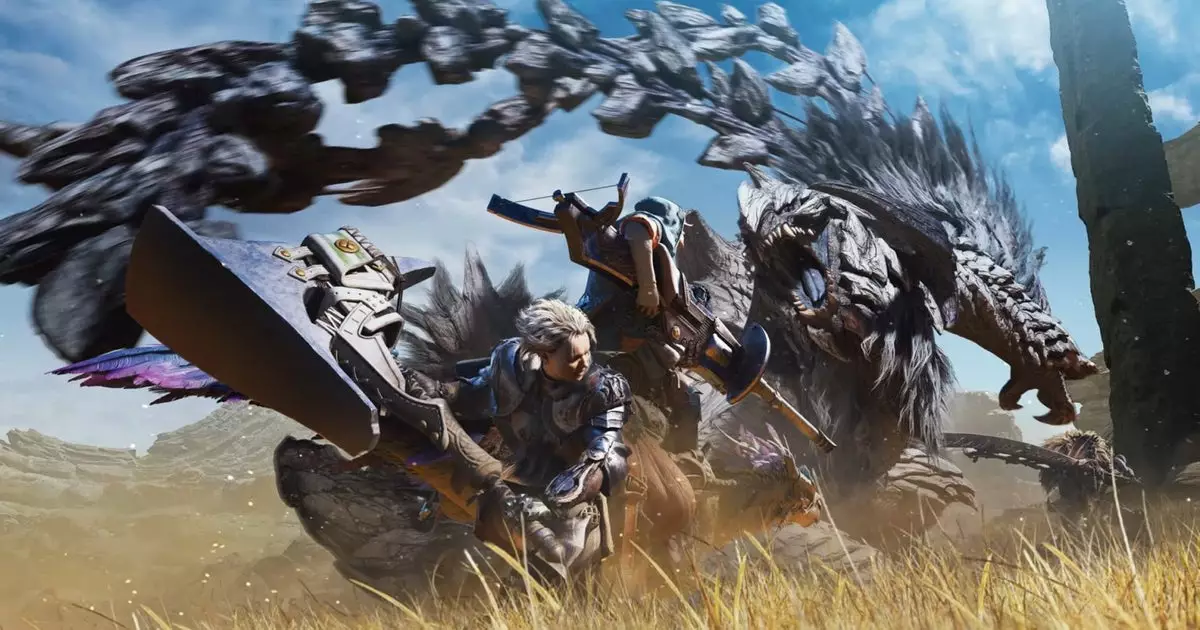The Monster Hunter series has consistently wowed players with its intricate ecosystems, monster designs, and diverse weaponry. With the release of Monster Hunter Wilds, one might expect an expansion in the game’s arsenal, especially considering the introduction of distinctive creatures like wyverns, toad monsters, and arachnids. However, upon closer examination, it seems that while Wilds has reinvigorated the game’s atmosphere with new life forms, the actual weapon types feel disappointingly static, maintaining a foundation that harkens back to earlier iterations of the franchise.
Despite the aesthetically rich design and refined movesets of the weapons in Monster Hunter Wilds, players may find that the core weapon categories echo those introduced years ago, such as in Monster Hunter Freedom 2. This perpetual feeling of familiarity poses both an advantage and a drawback. On one hand, established players might appreciate the comfort of known weapon mechanics; yet on the other hand, the lack of substantial evolution could stifle innovation and excitement for veterans seeking new gameplay experiences.
Capcom’s director Yuya Tokuda suggested in a recent interview that their approach to weaponry development leans toward refining existing options rather than crafting new ones. This decision certainly raises questions about the depth of creativity within the team. When asked if they contemplated introducing a 15th weapon type, Tokuda voiced concerns regarding how such an addition would fit into the existing framework without redundancy. Essentially, the creative focus seems to prioritize balance and depth over experimentation, which may leave some players yearning for bold innovations.
Tokuda’s insights illuminate an important aspect of game design: resource management. Developing a new weapon type requires significant investment in terms of time and team effort. Instead of stretching their resources thin by crafting a new weapon, Capcom appears committed to enhancing current creations to sustain balance and fluidity within gameplay. This realization could be applauded for reflecting an understanding of game dynamics; yet, it also evokes concern about the stagnation of ideas.
The improvements made to weapon mechanics and combos suggest a strategic aim to foster tactical depth. However, while layering complexity is valuable, it must also be balanced against player desire for novel experiences. Currently, it appears that the weight falls heavily on the side of enhancement rather than innovation, making one wonder if Capcom is missing an opportunity to enrich the series.
Wilds competes against the backdrop of its predecessor, Monster Hunter World: Iceborne, which catered to an audience skilled in mastering weapon intricacies. This leads to an interesting challenge for the developers: how to effectively integrate fan-favorite mechanics from Iceborne while still appealing to newer players who may find themselves lost among the weapon’s many nuances. Ideally, the game should cater to both segments of the player population, which can prove to be a formidable undertaking.
Furthermore, the unique ethos of Monster Hunter—where every weapon is derived from the monsters themselves—provides an avenue for imaginative exploration. Why not push boundaries by collaborating with monster design teams to conjure bizarre yet fascinating creatures? Imagine whimsical designs like balloon-based wyverns or triangular insects; such creativity might breathe new life into weapon development, allowing a playful and out-of-the-box mentality to emerge.
Monster Hunter Wilds undeniably offers an enriching experience brimming with vibrant monsters and engaging gameplay. However, it also poses pressing questions about the evolution of its weapon system. Capcom’s strategic decision to bolster existing weaponry rather than chase new options may seem prudent, but the repetition encountered may begin to grate on players hungry for fresh experiences. As the series moves forward, embracing substantive innovation alongside refinements will be crucial in satisfying both long-established fans and newcomers alike. If Monster Hunter wishes to thrive, it must venture beyond the known and into the fantastical.

